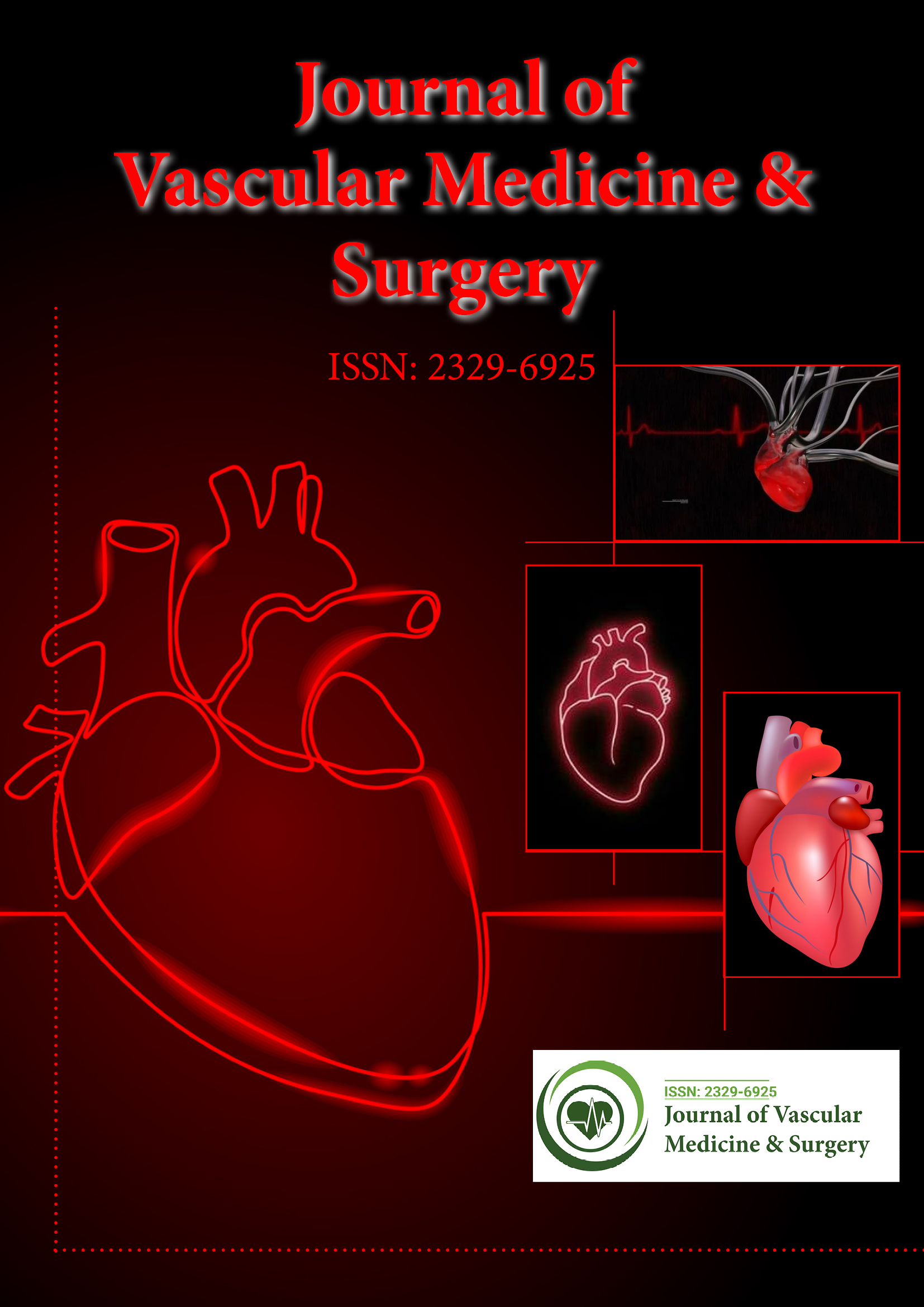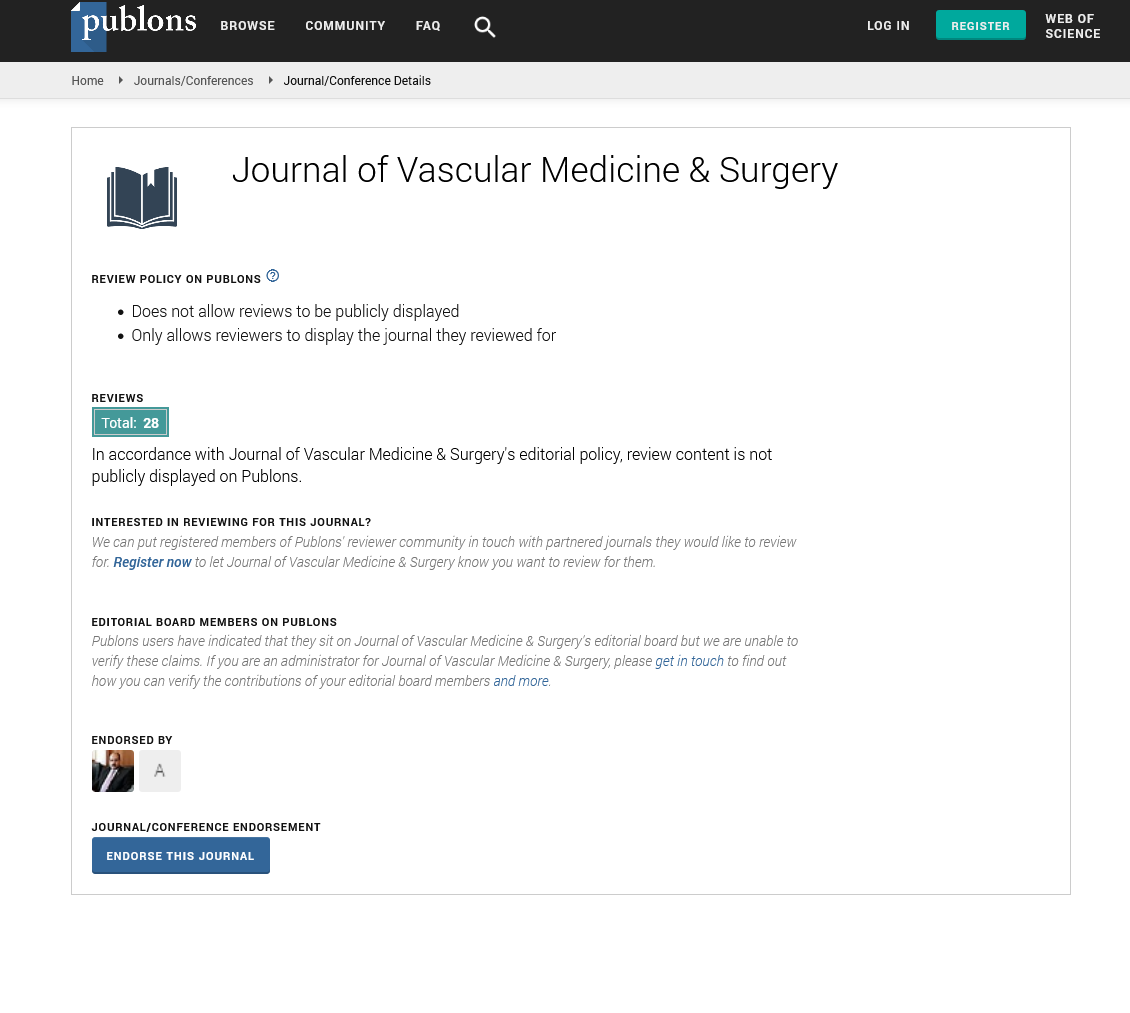Indexed In
- Open J Gate
- Academic Keys
- RefSeek
- Hamdard University
- EBSCO A-Z
- OCLC- WorldCat
- Publons
- Euro Pub
- Google Scholar
- SHERPA ROMEO
Useful Links
Share This Page
Journal Flyer

Open Access Journals
- Agri and Aquaculture
- Biochemistry
- Bioinformatics & Systems Biology
- Business & Management
- Chemistry
- Clinical Sciences
- Engineering
- Food & Nutrition
- General Science
- Genetics & Molecular Biology
- Immunology & Microbiology
- Medical Sciences
- Neuroscience & Psychology
- Nursing & Health Care
- Pharmaceutical Sciences
Commentary Article - (2023) Volume 0, Issue 0
Mechanism of Thrombosis and its Classification
Vlijmen Moscon*Received: 04-Feb-2023, Manuscript No. JVMS-23-20214; Editor assigned: 06-Feb-2023, Pre QC No. JVMS-23-20214 (PQ); Reviewed: 20-Feb-2023, QC No. JVMS-23-20214; Revised: 27-Feb-2023, Manuscript No. JVMS-23-20214 (R); Published: 09-Mar-2023, DOI: 10.35248/2329-6925.23.S14.504
Description
The formation of a blood clot inside a blood vessel, preventing the flow of blood through the circulatory system, it is referred to as thrombosis. When a coronary artery (a blood vessel or pulmonary veins) is injured, the body forms a blood clot by using platelets (thrombocytes) and fibrin to prevent blood flow. While no blood vessels are damaged, blood clots can form in the body under certain conditions. An embolus is a blood clot or a piece of a clot that breaks free and emerges to flow around the body. Thrombosis can occur in either the veins or the arteries (arterial thrombosis). Venous thrombosis is also known as Deep Vein Thrombosis (DVT) it is a condition that causes a blood clot in the affected area of the body, whereas arterial thrombosis affects the circulatory system and damages the tissue provided by that artery (ischemia and necrosis).
An embolus is a component of an arterial or venous thrombus that increases and travels through the circulation to filing in another location and cause an embolism. A thromboembolism is a type of embolism. Complications can occur when a Venous Thrombo-Embolism (VTE) forms in the lung as a Pulmonary Embolism (PE). An arterial thrombus can flow down the affected blood vessel and enter as an embolism. Thrombosis is extremely common and controlling worldwide deaths because thrombosis can cause to life-threatening conditions such as a heart attack, stroke, or deep vein thrombosis. Thrombosis is more common in people with certain chronic illnesses, such as: Atrial fibrillation is a heart rhythm disorder, cancer, coronary artery disease is a type of cardiovascular disease, diabetes, and antiphospholipid syndrome is a type of clotting disorder, tobacco consumption.
Thrombosis symptoms vary based on the size of the thrombus, where it forms or becomes clogged, and the complications it generates. Blood clots are highly possible in areas with very small blood vessels, such as the lungs, brain, and lower legs and arms. Thrombosis occurs when damages or reduces the inner lining of the blood vessel (endothelium).
Thrombosis is caused by three factors: Hypercoagulability, vascular endothelial injury in the blood vessel wall, and abnormal circulatory system. Hypercoagulability is also known as thrombophilia, it is characterized by increased levels of coagulation factors in the blood, which increases the risk of thrombosis. This is generally caused by genetics or immune system disorders. Injury to the epithelial cells on the blood vessel wall as a result of trauma, surgery, or inflammation can also cause coagulation and possibly thrombosis.
Types of thrombosis
The two main types of thrombosis are:
Arterial thrombosis: A blood clot that blocks an artery is referred to as arterial thrombosis. Arteries are vessels that transport blood from the heart to other parts of the body. Arterial blood clots can prevent the circulation of blood to the heart and brain, resulting to a stroke or heart attack.
Venous thrombosis: A blood clot in a vein is referred to as venous thrombosis it is also known as Venous Thrombo- Embolism (VTE). Veins travel through the bloodstream from other parts of the body to the heart. Venous thromboembolism is a general concept for Deep Vein Thrombosis (DVT) and Pulmonary Embolism (PE).
Citation: Moscona V (2023) Mechanism of Thrombosis and its Classification. J Vasc Surg. S14:504.
Copyright: © 2023 Moscona V. This is an open access article distributed under the terms of the Creative Commons Attribution License, which permits unrestricted use, distribution, and reproduction in any medium, provided the original author and source are credited.

